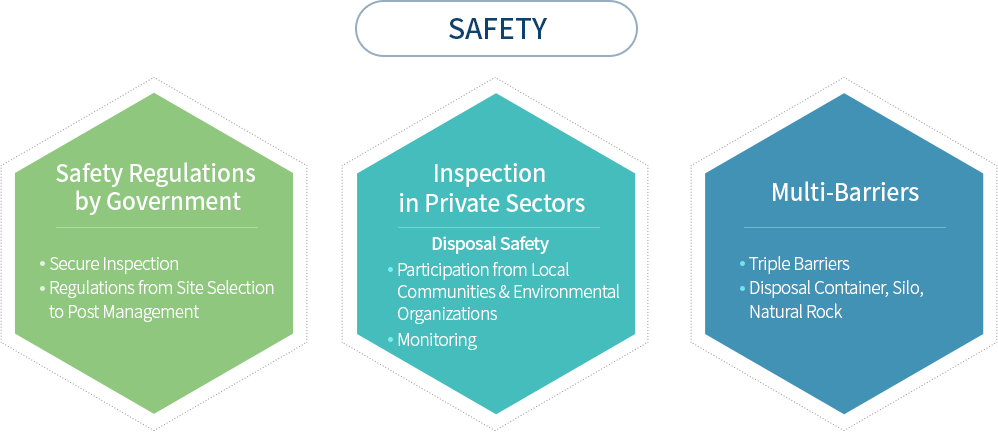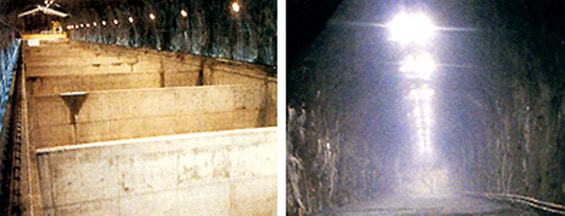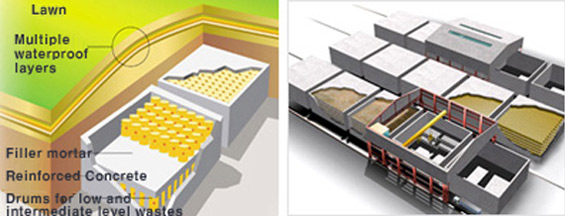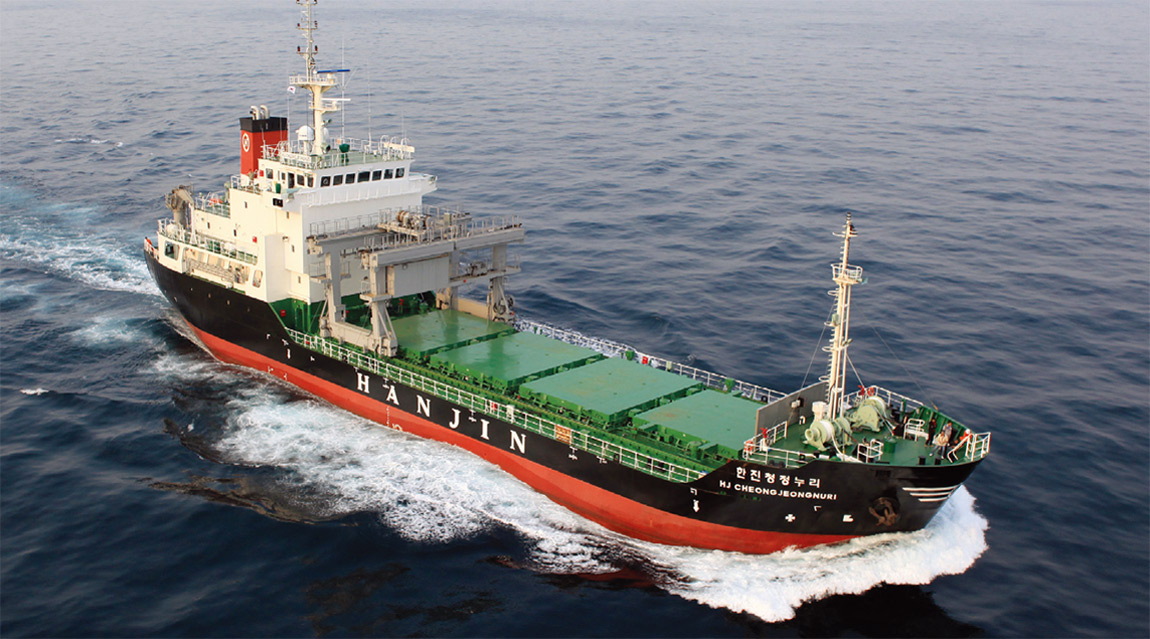Safety
Safety Principle
The most critical aspect of radioactive waste management is how to manage the radiation, and it becomes the safety standard of the radioactive wastes.
Safety Management of Radioactive Waste
The most critical aspect of radioactive waste management is how to manage the radiation, and it becomes the safety standard of the radioactive wastes.

Level of Radiation at the Disposal Facility
Annual radiation limit for an ordinary person:
1
mSv (millisievert) per year (not including 2.4 mSv of the natural
radiation)
Actual level of radiation at the disposal facility:
0.004 mSv per year (It is less than 0.01 mSv, the level of
radiation exposure from watching TV for 1 year)
Disposal Method
Underground Silo
Safety of Underground Silo Disposal Facility
Silo disposal is a method using natural and artificial barriers in a rock cavern in bedrock or under the ground, and the safety can be ensured by artificially excavating a silo.

Near Surface Disposal
Safety of Near Surface Disposal Facilities Reinforced with Artificial Barriers
Near surface disposal is a radioactive waste disposal
method with a natural or artificial barrier in depth of about 30 m
underground, and disposal with an artificial barrier is widely used
to secure safety.

Transportation System
Hanjin Cheongjeong Nuri
Features
Length and Width: 78.60m / frasl: 15.80m
Draft: 4.0 m
Total Tonnage: 2600 tons
Total Deadweight Capacity(DWT): 1365tons
Speed: 12.0 Knots
Engine: Double Diesel Engine Units (1632 HP each)
Max. Capacity: 190 Containers (1,520 Drums)
Characteristics of Hanjin Cheongjeong Nuri
It is designed and built with double-hull and double engine structure to prevent leakage in case of an accident.
An accident is prevented by state-of-the-art electronic equipment such as Automatic Identification System (AIS) and Automatic Radar Plotting Aids (ARPA). - The radiation level in the ship is automatically monitored by radiation monitoring system.
The radiation level in the ship is automatically monitored by radiation monitoring system.
Radiation protection and emergency response plans are established to prepare for an unexpected accident.
Safety is further guaranteed by prominent sailing personnel and radiation safety officers on board.











